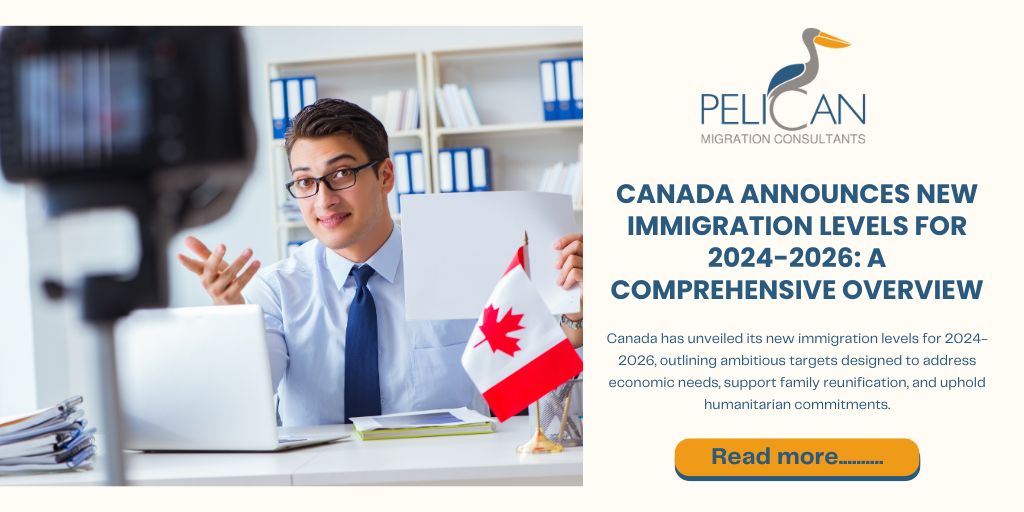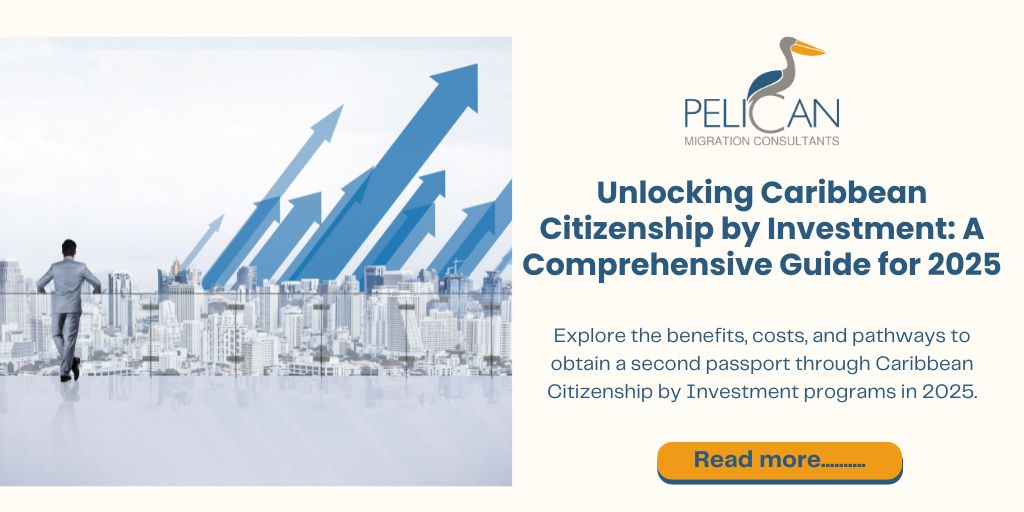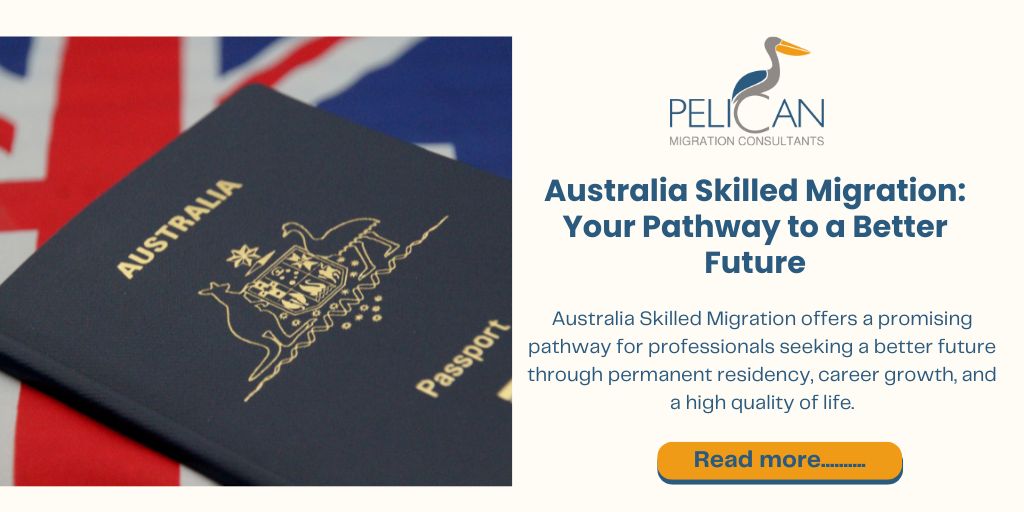
Canada continues to be a beacon of opportunity, attracting individuals from across the globe in search of a better quality of life. Known for its vibrant multicultural society, robust economy, and inclusive policies, Canada offers a promising future for those considering immigration. The Canadian government's recent announcement of new immigration levels for 2024 through 2026 highlights the country's ongoing commitment to welcoming foreign nationals and addressing its evolving demographic and economic needs. This update not only reflects Canada's ambitious goals but also underscores the essential role immigration plays in sustaining its growth and prosperity.
Understanding Canada's New Immigration Targets
On November 1, 2023, Canada unveiled its updated immigration targets for the years 2024 to 2026. These targets are set against the backdrop of a significant increase in immigration applications over the past year, demonstrating the country's capacity to handle higher numbers of new permanent residents. The new levels plan aims to accommodate over 1.4 million immigrants over the next three years, a record high in Canada's immigration history. This ambitious plan is designed to address labor market demands, family reunification, humanitarian commitments, and other key areas.
Key Targets for 2024-2026
Overall Immigration Goals
For 2024, Canada aims to welcome 485,000 new permanent residents. This number is set to increase to 500,000 in both 2025 and 2026. The gradual increase in targets reflects Canada's ongoing efforts to expand its immigration intake in response to economic and demographic needs. The plan allows for flexibility with target ranges, offering a lower limit of 430,000 and a higher limit of 532,500 for 2024. For 2025 and 2026, the range extends from 442,500 to 550,000. This flexibility ensures that the government can adjust its targets based on actual needs and evolving circumstances.
Economic Immigration
Economic immigration remains a central focus of the new targets. This category includes various streams such as federal high-skilled workers, provincial nominees, business immigrants, and specialized economic pilots like the Caregivers Program, Agri-Food Pilot, and Atlantic Immigration Program. The target for economic immigrants is set at 281,135 in 2024, increasing to 301,250 by 2025 and 2026. The Provincial Nominee Program (PNP) plays a crucial role in this category, with targets rising from 110,000 in 2024 to 120,000 in the subsequent years. This increase reflects the growing importance of provinces and territories in selecting immigrants who meet local labor market needs.
Family Reunification
Family reunification is another priority area, with targets for spouses, partners, children, and parents or grandparents set to increase over the next three years. In 2024, the target for family reunification is 114,000, with a slight increase to 118,000 in 2025 and 2026. This category allows for a flexible range, from 105,000 to 135,000 admissions, depending on specific needs and processing capacities in any given year. This flexibility aims to address the growing demand for family reunification while ensuring efficient processing of applications.
Refugees and Protected Persons
Canada remains committed to its humanitarian obligations, dedicating a significant portion of its immigration targets to refugees and protected persons. The target for this category is 76,115 in 2024, decreasing slightly to 72,750 in 2025 and 2026. The plan includes support for government-assisted and privately sponsored refugees, with the latter group seeing an increasing target over the years. The target for refugee admissions ranges from 66,000 to 93,000 in 2024, demonstrating Canada's continued leadership in global refugee resettlement.
French-Speaking Permanent Residents
An interesting aspect of the new immigration levels plan is the specific target for French-speaking permanent residents outside Quebec. This target rises significantly from 26,100 in 2024 to 36,000 by 2026. This increase reflects Canada's commitment to promoting bilingualism and supporting the growth of Francophone communities across the country, further enhancing the cultural diversity of Canada’s immigrant population.
Humanitarian and Compassionate Grounds
The immigration plan also includes provisions for immigrants admitted on humanitarian and compassionate grounds, although the targets for this category are more modest. The range for humanitarian admissions is set between 8,000 and 13,750 over the three years. This category ensures that Canada can address exceptional cases where individuals may not meet traditional immigration criteria but have compelling reasons for admission.
Achieving the Immigration Targets
The Canadian government's plan for 2024-2026 outlines a strategic approach to meeting its immigration targets. The goal is to bring in a growing number of permanent residents each year to address labor market needs, reunite families, and fulfill humanitarian commitments. The detailed breakdown of targets across various immigration categories, along with the flexibility in the target ranges, allows Canada to adapt its immigration strategy based on actual needs and changing circumstances.
The overall target for permanent resident admissions starts at 485,000 in 2024, increasing to 500,000 by 2025 and 2026. This progressive increase reflects Canada's commitment to expanding its immigration intake while maintaining the ability to respond to economic, social, and demographic changes. The plan allows for a flexible approach with low and high ranges, ensuring that the government can adjust targets based on real-time needs and conditions.
The Role of Immigration in Canada’s Future
Canada’s aging population and high retirement rates are key factors driving the need for increased immigration. As a large portion of the population reaches retirement age, there is a growing demand for a new workforce to sustain the economy and support essential services. This demographic shift highlights the importance of the new immigration targets for 2024-2026, particularly for those considering moving to Canada.
Canada's appeal as a destination for immigrants is well-established. The country offers a high quality of life, excellent education and healthcare systems, and a strong job market. Canada is known for its commitment to multiculturalism and inclusivity, providing a welcoming environment for newcomers from diverse backgrounds. With over 80 visas and immigration programs designed to meet various needs, Canada offers multiple pathways for individuals seeking to travel, study, work, or permanently settle.
The country’s safety, stability, and emphasis on human rights further enhance its attractiveness as an immigration destination. Consistently ranked high in global quality-of-life indices, Canada provides a secure foundation for those looking to build a future. The combination of economic opportunities, social stability, and welcoming policies continues to draw foreign nationals from around the world.
Conclusion
Canada’s 2024-2026 Immigration Levels Plan represents a bold and flexible approach to meeting the country’s evolving needs. By setting high targets across multiple categories and allowing for adjustments based on real-time conditions, Canada aims to achieve its immigration goals while addressing economic, humanitarian, and demographic requirements. This plan underscores Canada’s commitment to immigration as a crucial driver of its growth and development. For those considering making Canada their new home, understanding these targets and the opportunities they present is essential for making informed decisions about the future.
How Pelican Migration Consultants Can Help You Navigate Canada’s New Immigration Levels
With Canada's new immigration levels announced, it's a prime opportunity for those considering moving to the country. Pelican Migration Consultants are here to guide you through this exciting process, ensuring you make the most of the available pathways and meet the new targets effectively. Our expert team is dedicated to providing personalized support to help you achieve your Canadian immigration goals.
- Personalized Immigration Strategy
Pelican Migration Consultants create a customized plan tailored to your specific situation and immigration goals. By assessing your qualifications and aspirations, we design a strategy to maximize your chances of success under the new immigration levels. - Expert Guidance on Program Selection
We help you choose the most suitable immigration programs from the wide array offered, such as economic, family reunification, or refugee pathways. Our consultants ensure you are aware of all options and select the best fit for your profile. - Application Assistance and Documentation
Navigating the application process can be complex and time-consuming. Our team provides comprehensive assistance with gathering and organizing required documents, ensuring your application is complete and meets all criteria. - Up-to-Date Information and Support
We stay current with the latest immigration policies and changes to provide you with accurate and timely advice. This up-to-date knowledge helps you adapt to any new requirements and deadlines effectively. - Ongoing Support Throughout the Process
From the initial consultation to receiving your visa, Pelican Migration Consultants offer continuous support and guidance. We address any concerns and answer questions, ensuring a smooth and stress-free immigration experience.
With the new Canadian immigration levels setting ambitious targets, now is the ideal time to consider your move to Canada. Let Pelican Migration Consultants help you navigate this opportunity with confidence and achieve your dream of living in Canada. Contact us today to start your journey towards becoming a permanent resident.
Frequently Asked Questions About Canada’s New Immigration Levels for 2024-2026
- What are Canada’s new immigration targets for 2024-2026?
Canada's new immigration targets for 2024 aim to welcome 485,000 new permanent residents. The targets increase to 500,000 for both 2025 and 2026. These targets are part of Canada’s strategy to address economic needs, family reunification, and humanitarian commitments. - How does the new immigration plan affect economic immigration?
The economic immigration category is a significant focus of the new plan. Targets for economic immigrants are set at 281,135 in 2024, rising to 301,250 by 2025 and 2026. This includes federal high-skilled workers, provincial nominees, business immigrants, and specialized economic pilots. - What changes are there in family reunification targets?
Family reunification targets are set to increase slightly over the next three years. For 2024, the target is 114,000, rising to 118,000 in 2025 and 2026. This allows for a flexible range to accommodate the demand for family reunification. - How does the plan address refugee and humanitarian admissions?
The plan allocates 76,115 admissions for refugees and protected persons in 2024, decreasing to 72,750 by 2025 and 2026. This includes government-assisted and privately sponsored refugees, with targets for privately sponsored refugees increasing over time. - What role do French-speaking permanent residents play in the new immigration levels?
The new plan includes a specific target for French-speaking permanent residents outside Quebec, increasing from 26,100 in 2024 to 36,000 by 2026. This aims to promote bilingualism and support Francophone communities across Canada.


